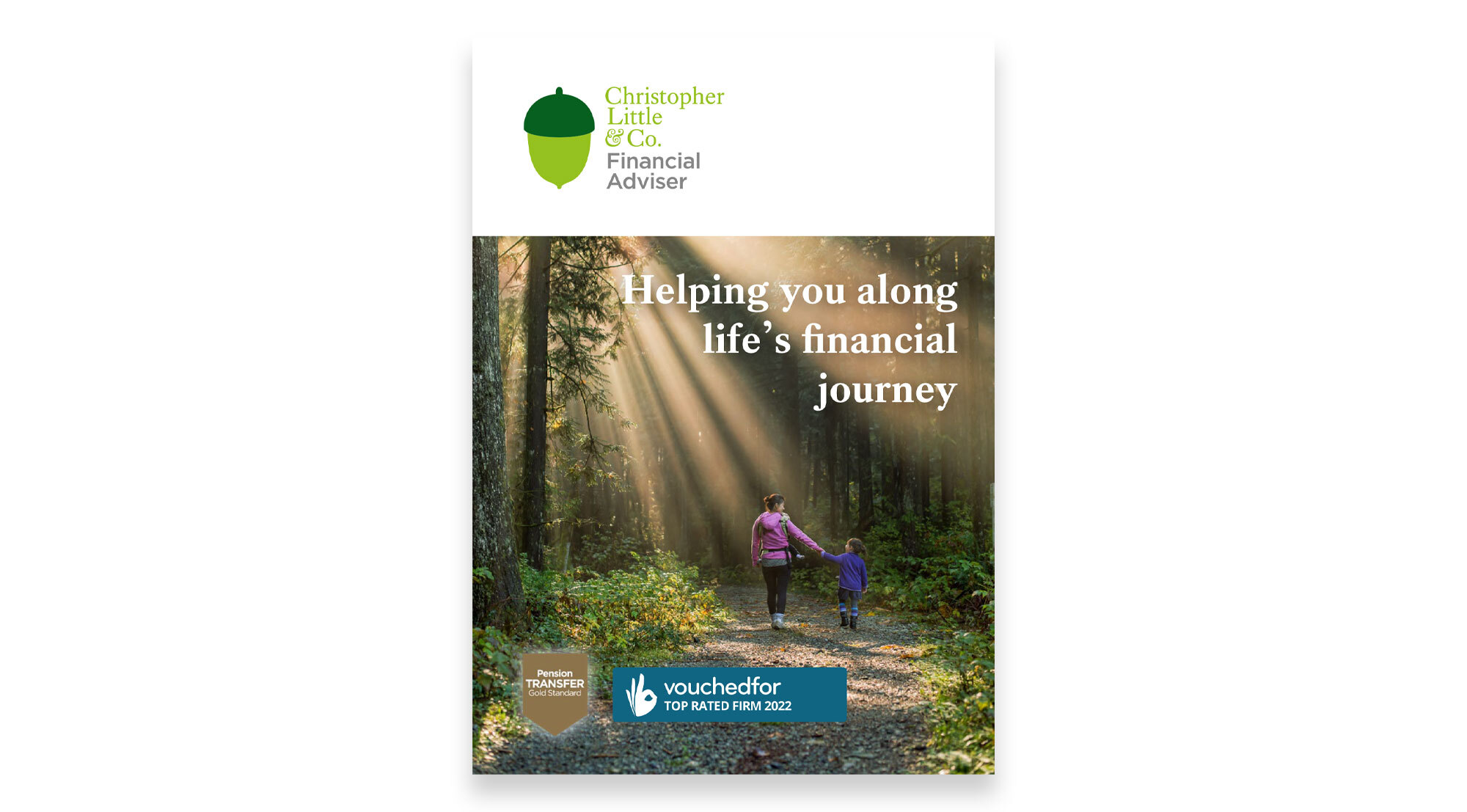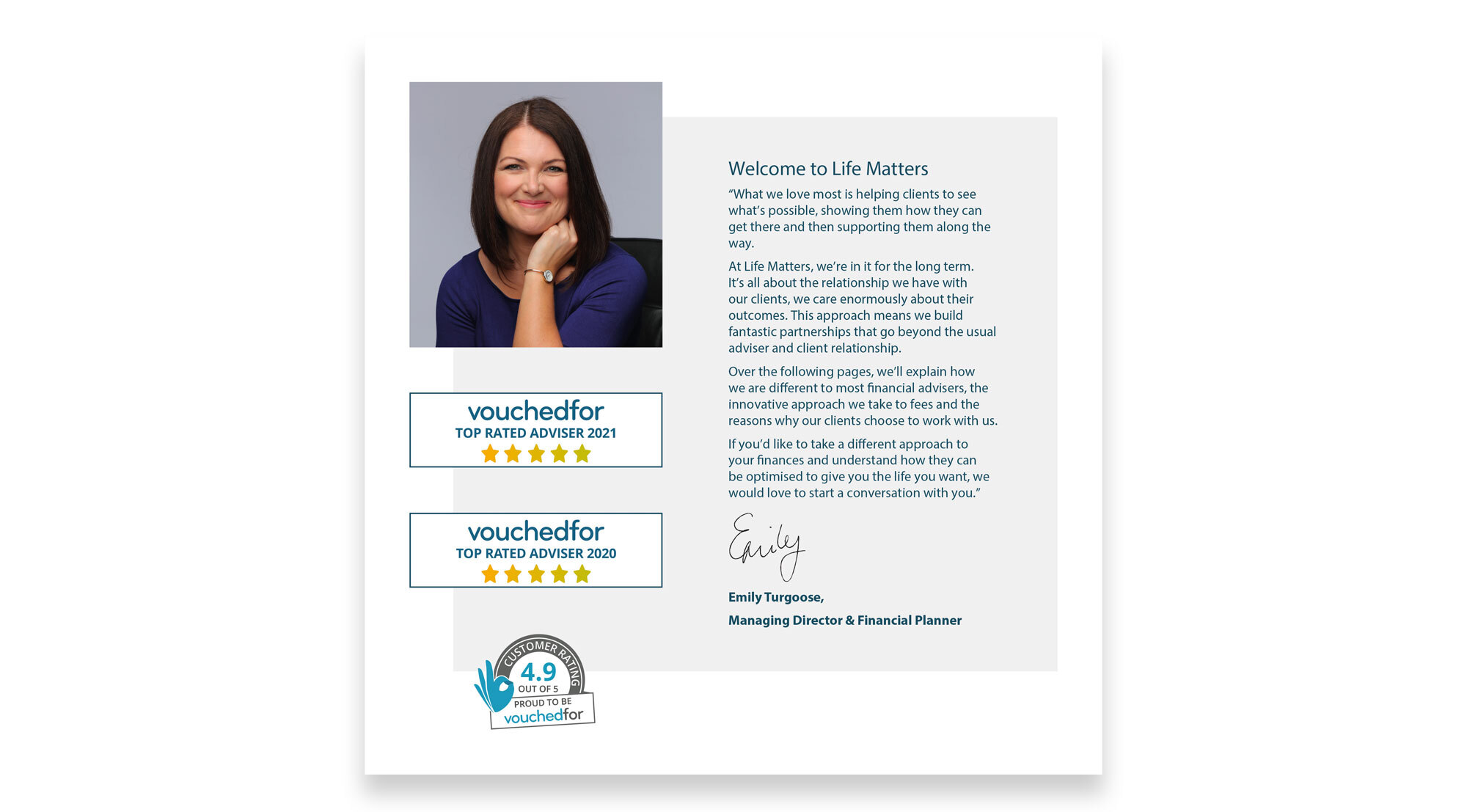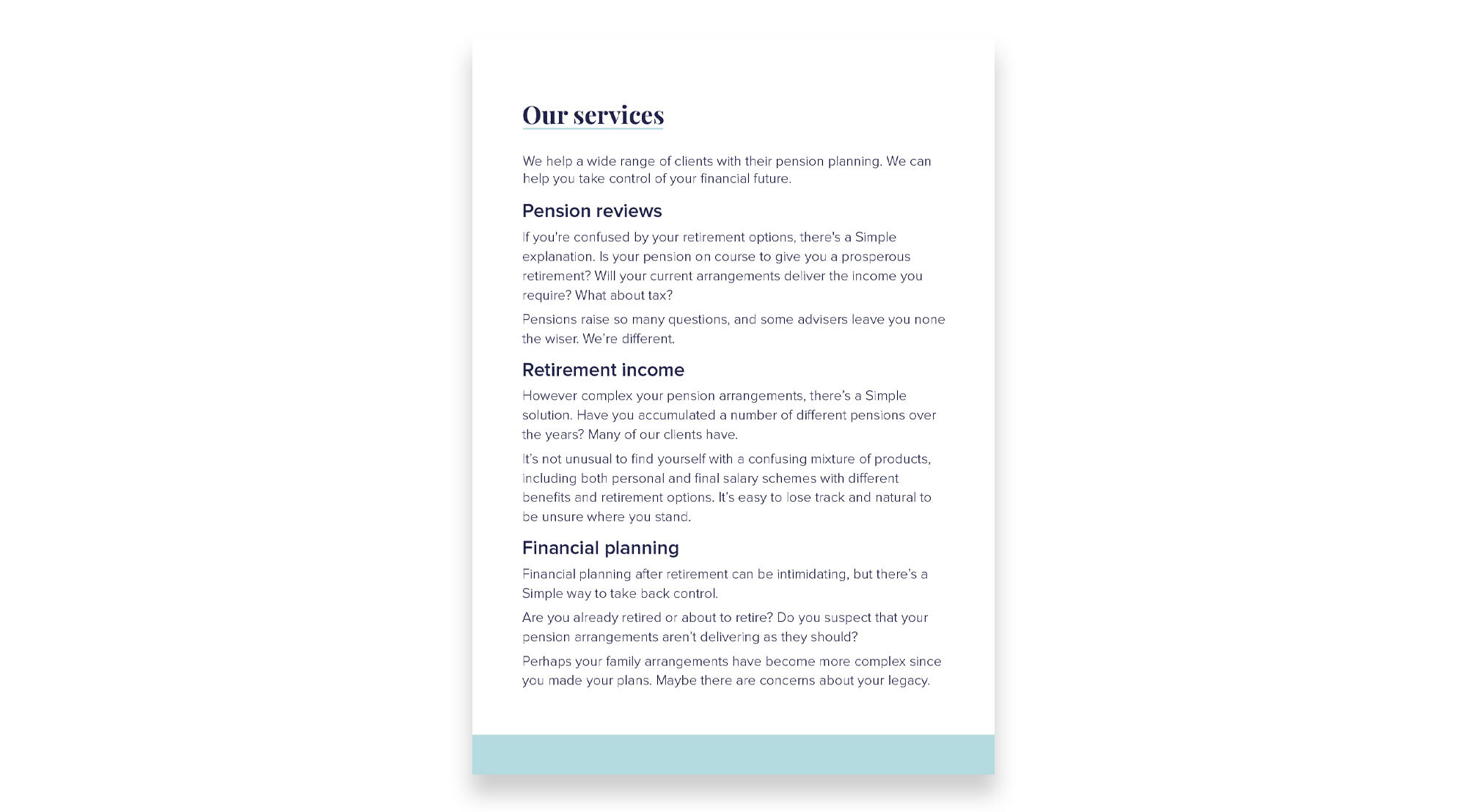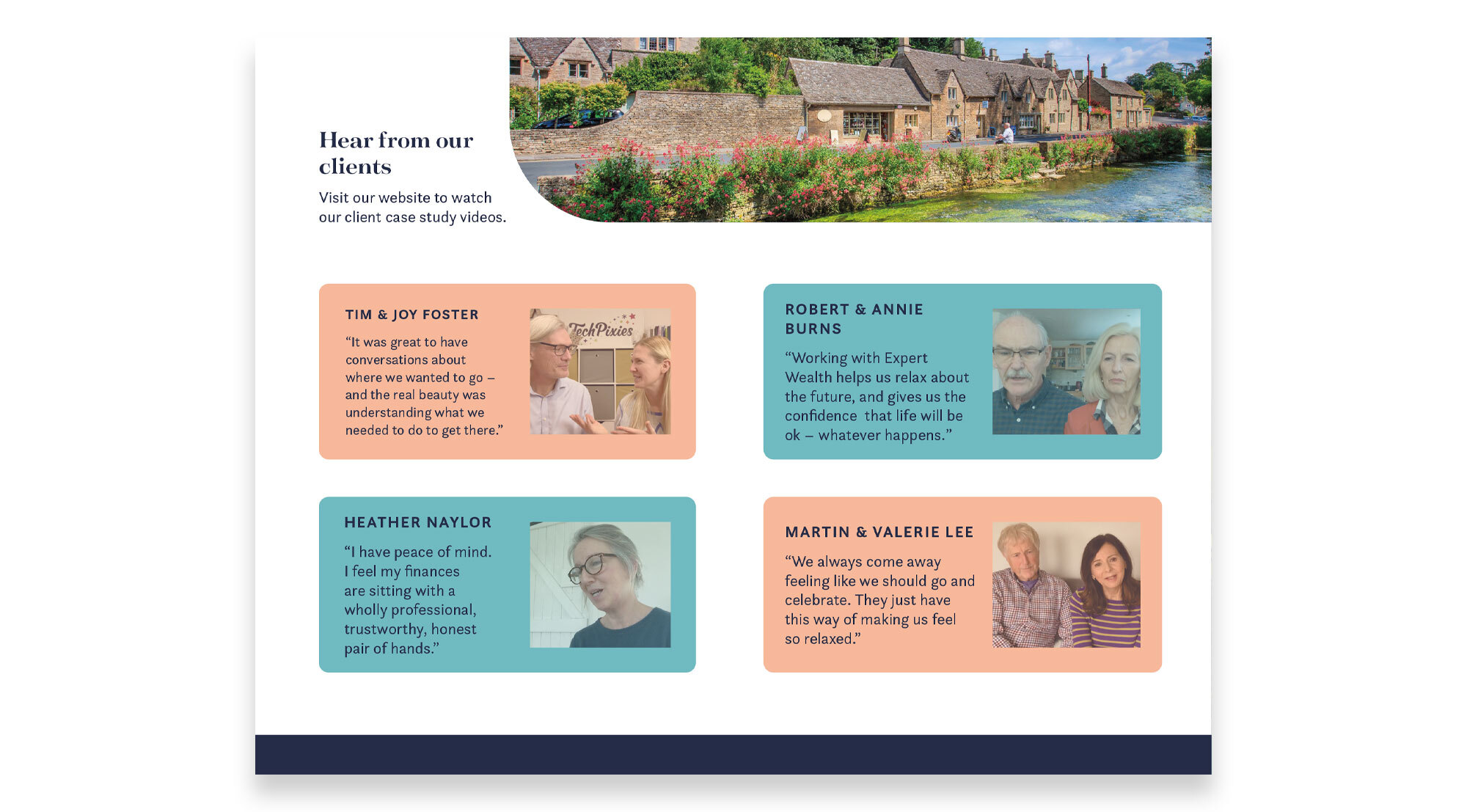Ape chauffeurs.
Hear me out. Everybody that doesn’t have a robot gets a trained ape instead.
It will drive you back from the pub, do the vacuuming and will absolutely not get ape-madness and pull your arms off.
According to a 1967 article in The Futurist, this is what 2022 looks like.
With how the past few years have been, ape attacks would be pretty low down on our list of problems.
People have a tricky time predicting the future. Things can go sideways real fast. And it got me thinking; are brochures still relevant in 2022?
The TL;DR is absolutely “yes”, but it’s not as clear-cut as that. What even is a brochure in 2022? Does a website make it redundant? What is the point of a brochure (or anything, really)?
Bad ape! What are you doing? Get your feet-hands out of my bread bin!
Honestly…
What is the point of a brochure?
In their simplest form, they give the reader information about you and your services.
They have many uses, mainly:
1. To reinforce what your website says
A common sentiment I hear from advisers and planners is how abstract the concept of advice is.
The actual value is in you and what you say and do. But your clients might walk away with their folder, brochure, or other collateral held tightly in their hands.
It’s a tangible thing that represents the value you are giving them.
Of course, brochures don’t need to be physical, which we’ll touch on later, but I hear it often. Clients don’t want piles of unnecessary paperwork, but they cherish the things you give them.
2. As an organic referral tool
We held a webinar recently on the right way to generate recommendations from clients. Phil writes often about the subject.
While there are tons of things you can actively do, a lot can happen without you.
A brochure may end up on a coffee table or be handed to a friend after a conversation. They have a funny habit of cropping up in obscure places if they’re roaming free in the wild.
Sending out a pile of brochures absolutely isn’t a “referral strategy”, but I’m always surprised by the number of times I hear about a brochure leading to a recommendation that subsequently became a great client.
3. As a warmer way of sending them a weblink
Let’s become a client for a second.
They give your office a call because they’ve decided they need help. You’re lucky enough to be on their shortlist and have ended up on the other side of the phone.
The call goes well, and they say they’ll think things over. Where can they find out more about you?
You could point them in the direction of your website, either by reading out the address or emailing them a link. Alternatively, you could email over a PDF of your brochure for them to read through, giving them a warmer route to your website.
I know which I’d prefer.
What information should they contain?
Are we simply printing out our website?
The answer to that is “no”, but let’s put ourselves in the reader’s shoes again. What do they need while thumbing through the pages?
Reassurance please. On the following things:
1. Confirmation they are in the right place
Phil mentions the importance of the split-second test with websites, and the same logic applies here.
We only have a finite amount of time spent clinging to Earth as it careers wildly through space, and we must use it wisely.
Let people know they are in the right place by using imagery well. That hero statement on your website that explains what you do? Use it here.
Don’t try to be too clever with an abstract strapline, or a conceptual image that risks alienating people. We want them to breathe out with relief when they pick it up. Don’t worry my friends; you are in a safe place now. In through the nose, out through the mouth.
Take this example. The strapline and image on the cover tells us all we need to know in order to keep reading.

2. Who you are
If you tune into our regular webinars, you’ll often hear Phil say there are no unique selling points (USPs) in financial services.
This makes it even more important to talk about yourself. The way you explain your history and team, the tone of voice used, and how you choose to describe your values. It all matters.
I often stumble across brochures that use extremes. They either have little more than “founded in X, based in Y”, or are filled with heaps of jargon.
A warm and engaging middle ground does wonders.
This example demonstrates a “letter from the editor” type introduction to the brochure, where Emily welcomes the reader in with open arms.

3. What you do
Very few people hop out of bed one morning and say: “I need a financial planner”.
It sounds obvious, but clearly stating what you do, other than listing “financial planning”, “wealth management”, “pensions” and so on without further definition is rare.
Don’t assume your client knows the ins and outs of the financial services sector – often it’s the first time they’ve taken advice when speaking to you.
Describe the situation that somebody may be in and explain how you can help them. A list of products isn’t telling them what you do.
Here we see a list of three core services explained in simple terms. It doesn’t answer every single question a client will have, but it offers a solid middle ground to begin with.

4. Who you do it for
Nobody wants to be a guinea pig.
(Including guinea pigs themselves. They always look a bit freaked out.)
Demonstrating to the reader that you help people in their situation is essential. Outlining different client types gives them comfort and places their mind at ease.
It works both ways. If you only help a specific type of person, outlining this here acts as a filter, hopefully reducing the number of people ending up in the wrong place.
Rowley Turton Private Wealth Management do a great job of listing their client personas and narrowing down their focus to the right people.

5. Examples of you doing it well
It’s all well and good for you to be going on about how brilliant you are. But it means more coming from an existing client.
Of course, they are biased (so are you), but their words are far more powerful than yours, so get them in there.
We’re talking:
- Testimonials
- Case studies
- Reviews
- Client survey results
- Awards
Carefully placing them throughout the document gives regular and gentle nudges that they are putting themselves and their financial future in capable hands.

What types of brochures are there?
Let’s add a thick juicy caveat before we start.
I’m simplifying things down to include the 99% of brochures we tend to see crop up with our clients. All sorts of weird and wonderful things exist, so bear that in mind.
Brochure types often get categorised by format and length.
Starting with the format, you have those glossy boys that are printed out and handed around. Then you’ve got digital copies viewed on screen.
There are upsides to both:
- Printed – a physical, tangible item that people attribute value to
- Digital – a versatile waste-free piece that is easier and cheaper to update.
There is no correct answer, so both formats are often utilised. Of course, it does get tricky when you include team member photographs and start printing them out. New hires and people moving on can knock them out of date surprisingly fast, so be sensible with print quantities. If in doubt, don’t include headshots of everybody.
Next, we have length.
Long-form brochures have been around the longest. They are often A4 portrait, and run between 12 and 24 pages.
As much as we love designing these whoppers, anecdotal evidence suggests a preference for short-form, bite-sized brochures.
These are far simpler and sit at 8 to 12 pages with plenty of breathing room. Rather than repeat everything on the website, they offer a gentler introduction.
How can we help?
As you can probably tell, we enjoy working on brochures.
We have a team of writers and designers that can assist with the whole process.
This begins with a discovery call to outline the content, and capture your tone of voice. We then write the copy and provide it as plain text for approval before moving onto the design phase, where we fit it to your preferred format.
Nice and simple. Let’s see an ape do that eh?
Oh wait, they did and it’s surprisingly engaging? I feared that might be the case.
Well, if you don’t want to risk ape-madness, and you want to talk brochures, email hi@theyardstickagency.co.uk or call 0115 8965 300.


